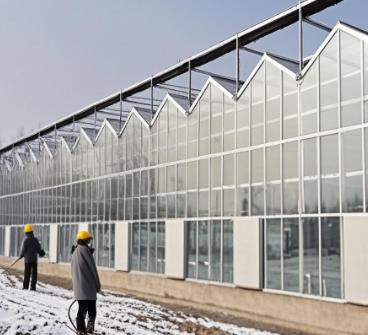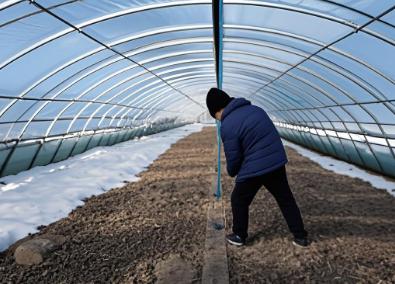When it comes to greenhouse gardening in cold climates, the right design can make all the difference. A well-designed greenhouse can maximize heat retention, minimize energy costs, and ensure your plants thrive even in the coldest months. Here are some of the best greenhouse designs and features to consider for cold weather:
1. Dome-Shaped Greenhouses
Dome-shaped greenhouses are particularly effective in cold climates. Their curved surfaces maximize sunlight absorption from all angles and naturally shed snow, reducing the risk of structural damage. This design is not only efficient in capturing light but also aerodynamic, making it resistant to strong winds. Many gardeners find that dome-shaped greenhouses maintain a consistently warm environment, even on the shortest winter days.
2. Double-Layer Inflatable Film Greenhouses
Double-layer inflatable film greenhouses are highly energy-efficient. By inflating the space between two layers of plastic film, you create an insulating air layer that significantly improves heat retention. This design can reduce energy consumption by over 40%, making it an excellent choice for maintaining a warm environment without high heating costs.

3. Double-Layer Arch Film Greenhouses
This design enhances insulation through a dual-layer framing structure covered with transparent films and thermal curtains. The multi-layer system includes inner and outer films, a thermal curtain, and a static air layer. At night, the curtain and inner film prevent heat loss, making it an effective solution for maintaining warmth during winter.
4. Passive Solar Greenhouses
Passive solar greenhouses rely on energy from the sun to maintain a warm environment. These greenhouses are designed to capture and store solar energy during the day and release it slowly at night. Features like thermal mass (e.g., water barrels, stones, or concrete) can help stabilize the temperature inside the greenhouse. Additionally, insulating the north side of the greenhouse can prevent heat loss without blocking sunlight.
5. Insulated Greenhouses
Insulating your greenhouse is crucial for retaining heat. Consider using materials like polycarbonate panels, which offer excellent insulation and are more durable than traditional glass. For added insulation, you can also use bubble wrap or reflective insulation on the interior walls and roof. Insulating the foundation of your greenhouse can also help prevent heat loss below the frost line.
6. Heated Greenhouses
In extremely cold climates, additional heating may be necessary. Modern greenhouses often rely on heating systems to maintain a warm environment. Options include electric heaters, heating cables, and solar heaters. These systems can be energy-efficient and provide consistent heat, ensuring your plants stay warm even during the coldest nights.
7. Ventilation Systems
Proper ventilation is essential for maintaining a healthy environment inside your greenhouse. Automated vents can open and close based on temperature, ensuring proper air circulation and preventing overheating or excessive humidity. This helps maintain a stable climate, which is crucial for plant health.
Conclusion
Choosing the right greenhouse design for cold weather involves a combination of smart features and materials. Dome-shaped greenhouses, double-layer inflatable film designs, and passive solar greenhouses are all excellent options for maximizing heat retention and energy efficiency. By insulating your greenhouse, using thermal mass, and incorporating a reliable heating system, you can create a stable and warm environment for your plants. With these strategies, you can enjoy a thriving winter garden, even in the harshest conditions.
Welcome to have a further discussion with us.
Phone: +86 15308222514
Email: Rita@cfgreenhouse.com

Post time: Jul-14-2025







 Click to Chat
Click to Chat